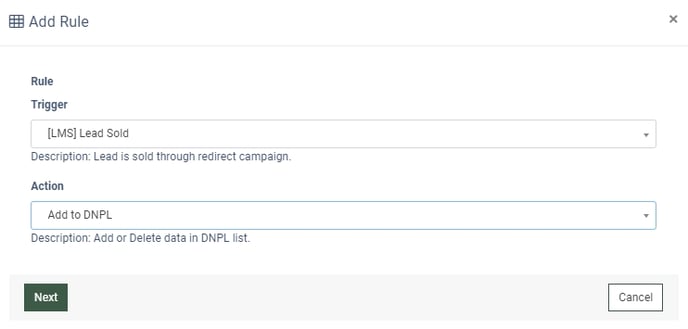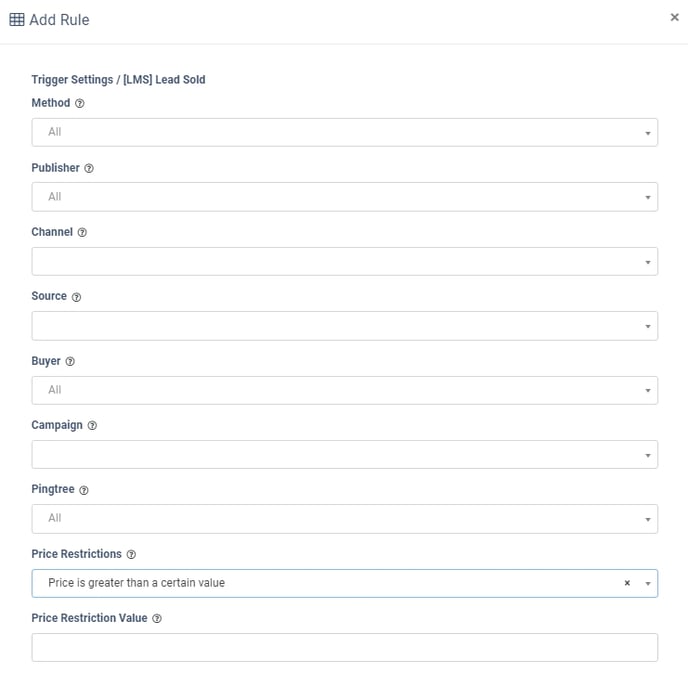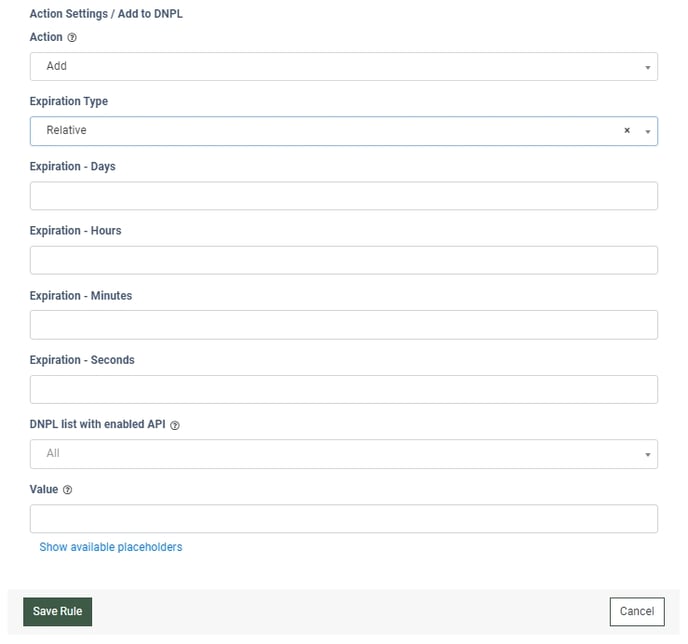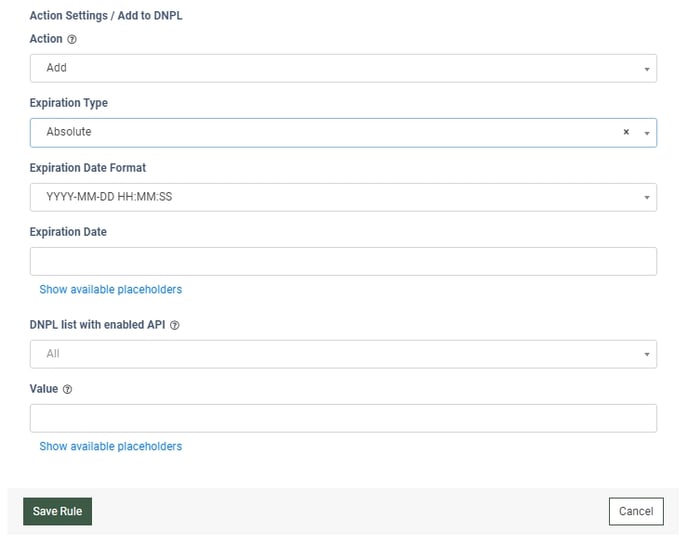The Add to DNPL tracking type allows you to add data to the existing DNPL list when the selected trigger event takes place.
Read more about the Event Tracking feature and its configuration in the “Event Tracking (LMS / Call Logic)” Knowledge Base article.
Read more about the DNPL feature in this Knowledge Base article.
To add a Tracking Rule, go to the System Management > Products section, select the Product from the list, and click the “Settings” button in the “Actions” column. Select the “Tracking” tab on the Product Setup page.
Note: The Add to DNPL tracking type can be configured only on the Product level.
To create this integration rule, fill in the following fields in the “Add Rule” pop-up window:
Trigger: Select the event that triggers the action:- [LMS] Lead Sold: The lead is sold through the Campaign.
- [LMS] Lead Rejected: The lead is not accepted by any Campaign.
- [LMS] Post Reject: The post was rejected (for Ping-Post products only).
- [LMS] Campaign Rejected: The Campaign has rejected the lead.
- [LMS] Campaign Sold: The lead was sold to the Сampaign.
- [LMS] Lead Offer Received: The lead status changed to "Offer Received" after a successful ping (for Ping Post Products only).
- [Call Logic] Lead Sold: The lead was sold to the Publisher.
- [Call Logic] Lead Rejected: The lead was rejected by the Publisher.
- [Call Logic] Campaign Rejected: The Campaign has rejected the lead.
- [Call Logic] Campaign Accepted: The Campaign has accepted the lead.
- [Call Logic] Campaign Sold: The lead was sold to the Campaign.
- [Call Logic] Call Recorded: The call is recorded and ready to be downloaded.
- [Call Logic] Buyer Response: The Buyer has answered the call.
- [Call Logic] Duration to sell reached: The lead has reached the "Duration to sell" time.
- [Call Logic] AMD: The answering machine is detected on the Buyer's side.
Once you select the preferable event, click the “Next” button to proceed with the setup.
The “Trigger Settings” block allows you to set up additional filters for the selected event. The filter fields are optional. If no filters are set up, the action will be triggered for all the leads that fit the event trigger.
Depending on the user role and platform, the following filters for trigger settings are available:
- Method: Select the Method (POST/FORM).
- Publisher: Select the Publisher.
- Channel: Select the Channel.
- Source: Select the Source.
- Buyer: Select the Buyer.
- Campaign: Select the Campaign.
- Pingtree: Select the Pingtree.
- Price Restrictions: Select the Price restrictions (Price is greater than 0, Price is greater than a certain value, Price is greater than or equal to a certain value, Price is lower than a certain value, Price is lower than or equal to a certain value, Price range inclusive). Note: The “Price range inclusive” value is available only for the “Lead Sold” and “Campaign Sold” triggers.
- Price Restriction Value: Enter the price value.
- Min Price: Enter the minimum price value to trigger the rule by the price range (available only for the “Price range inclusive” value in the “Price Restrictions” field).
- Max Price: Enter the maximum price value to trigger the rule by the price range (available only for the “Price range inclusive” value in the “Price Restrictions” field).
The “Action Settings/Add to DNPL” block allows you to configure the action required for the rule setup:
- Action: Select the action to perform (Add/Delete).
- Expiration Type: (Available for the “Add” action only). Set a specific date to delete the record from the DNPL list.
- Select the “Relative” type of the date to set a period after which the record will be deleted from the DNPL as expired.
- Expiration - Days: Enter the number of days before the expiration.
- Expiration - Hours: Enter the number of hours before the expiration.
- Expiration - Minutes: Enter the number of minutes before the expiration.
- Expiration - Seconds: Enter the number of seconds before the expiration.
- Select the “Absolute” type to set a particular day and time when the record will expire.
- Expiration Date Format: Select the incoming date format. (If the format differs from the system default, it will be reformatted to YYYY-MM-DD HH:MM:SS).
- Expiration Date: Enter the date of expiration.
- DNPL list with enabled API: Select the DNPL list for the rule.
- Value: Select the value to add/delete from the DNPL.
Click the “Save Rule” button to confirm.




